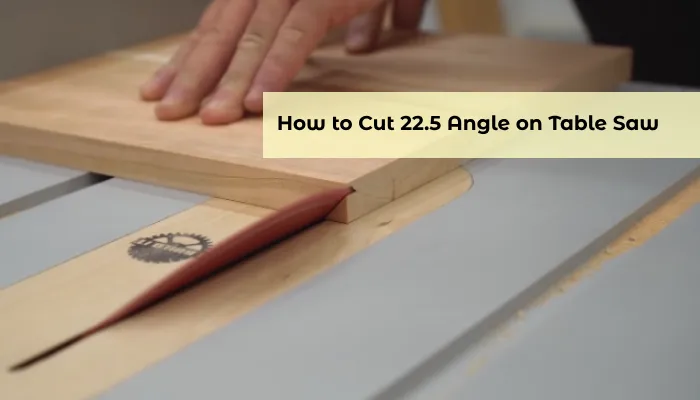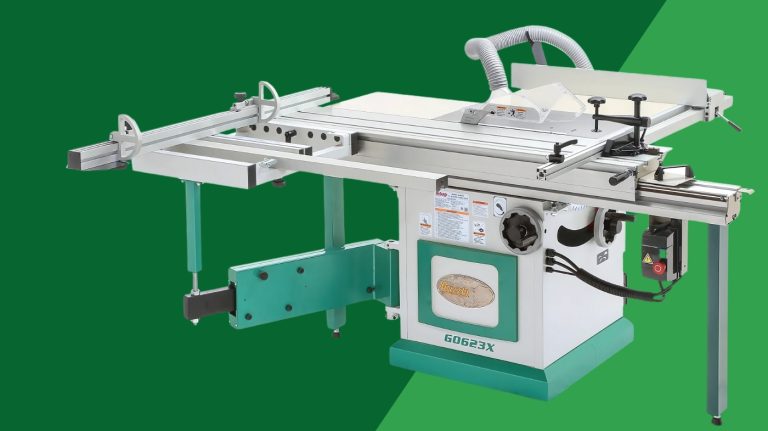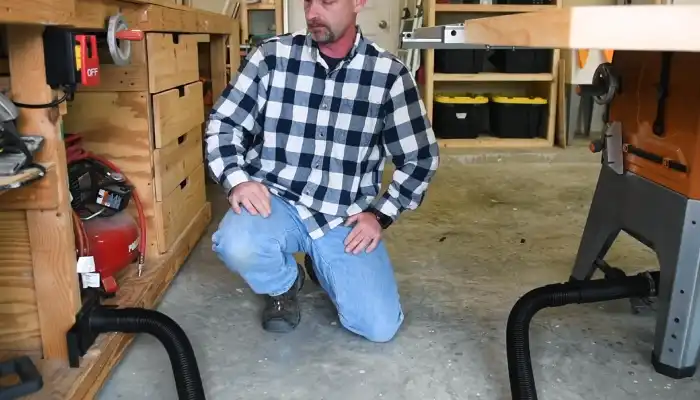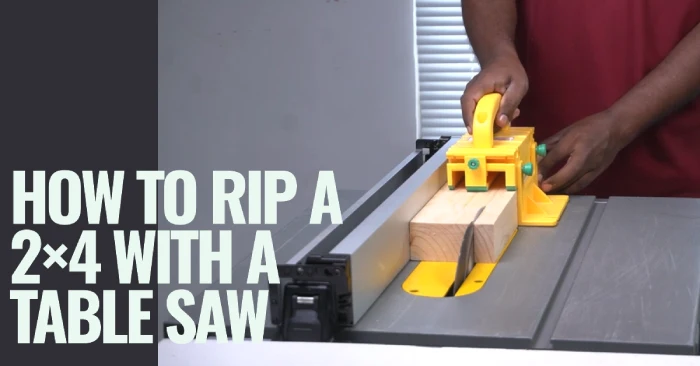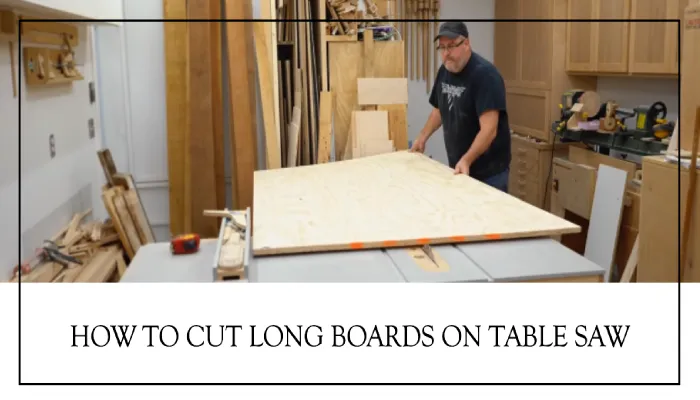How to Cut 22.5 Angle on Table Saw: 5 Easy Steps
Cutting a 22.5-degree angle on a table saw is different from other angle cuts due to its unique measurement. As a woodworking enthusiast, I have researched this technique extensively and found that a systematic approach is necessary to achieve the precision and accuracy required for this cut.
The key to cutting a precise 22.5-degree angle is to mark the wood meticulously. You can use a carpenter’s square or protractor to create a precise right-angled guide that will ensure accuracy throughout the subsequent steps. It’s crucial to attach a tenoning jig securely to the miter gauge slot to provide stability for accurate and repeatable cuts.
Setting the blade angle to 67.5 degrees is essential to compensate for the complementary angle relationship. I will demonstrate how to cut a precise 22.5-degree angle on a table saw so you can achieve professional results in your woodworking projects.
How to Cut 22.5 Angle on Table Saw: Step-by-Step Instructions
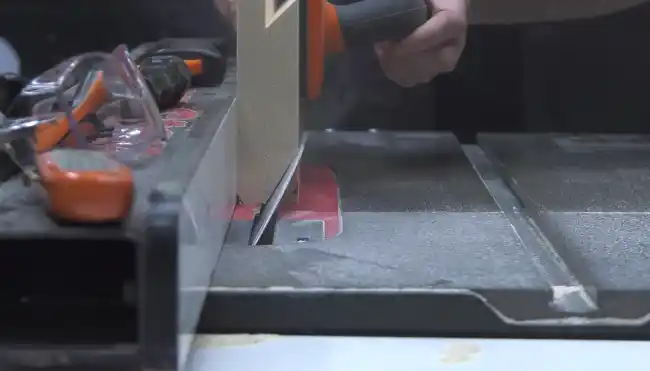
You have to take the following steps that I have outlined below:
- Step 1: Mark the wood with a carpenter’s square
- Step 2: Attach the tenoning jig to the miter gauge slot
- Step 3: Set the blade angle
- Step 4: Turn on the table saw and make the cut
- Step 5: Check the newly cut wood
Step 1: Mark the Wood With a Carpenter’s Square
For cutting a 22.5-degree angle on a table saw, you have to mark the wood accurately. Firmly hold a Carpenter’s Square against it and create a right-angled mark for the 22.5-degree angle cut on the table saw.
Then, mark the desired angle using a pencil or a marking tool. Make sure the mark is clear and visible. You can also use a protractor to ensure an accurate 22.5-degree angle.
Step 2: Attach the Tenoning Jig to the Miter Gauge Slot
Once you have marked the wood, the next step involves the use of a tenoning jig. Start by sliding the tenoning jig into the miter gauge slot, making sure it fits snugly. Then, tighten the locking mechanism to secure the jig in place.
You have to check that the jig is aligned parallel to the blade for accurate cuts. Using a wrench or screwdriver, tighten any adjustment screws or knobs to ensure the jig is firmly attached.
Step 3: Set the Blade Angle
After securely attaching the tenoning jig to the miter gauge slot, the next step is to set the blade angle on the table saw. The size of the table saw, whether it’s a 10-inch or 12-inch, depends on the thickness of the material you are working with.
To cut a 22.5-degree angle, you’ll need to adjust the blade angle to 67.5 degrees. Start by loosening the bevel adjustment on your table saw, which is usually controlled by a wheel or lever.
Once loosened, use a protractor or digital angle gauge to set the blade angle accurately. The complementary angle to 22.5 degrees is 67.5 degrees, so make sure the protractor or gauge aligns correctly.
After adjusting the blade angle, tighten the bevel adjustment securely to lock the blade in place. To double-check the angle, use a carpenter’s square or digital angle gauge against the blade and table to verify the measurement.
Step 4: Turn on the Table Saw and Make the Cut
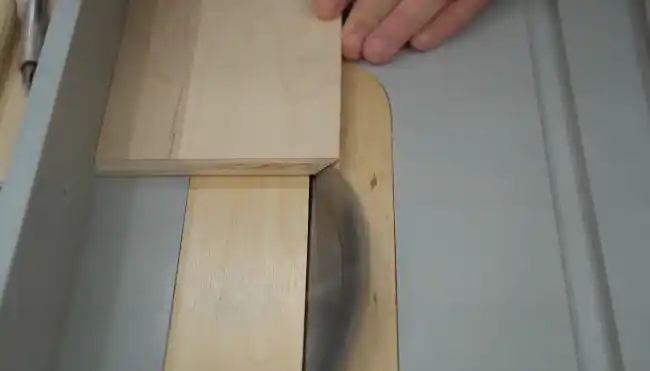
With the attached tenoning jig and the blade angle set, it’s time to power on the table saw and make the precise 22.5-degree cut. Stand on the right side of the saw, ensuring you have your safety glasses and hearing protection on.
Hold the wood firmly against the tenoning jig and guide it through the saw, making the cut slowly and steadily.
Step 5: Check the Newly Cut Wood
To ensure the cut’s accuracy, thoroughly inspect the newly cut wood for any deviations from the desired 22.5-degree angle. After completing the cut, take a moment to examine the angle and verify that it matches the intended measurement.
Use a square or protractor to measure the angle precisely. Check all sides of the wood to ensure consistency. Adjustments may be necessary if you notice any discrepancies or angles that aren’t at 22.5 degrees.
Is it necessary to utilize a push stick when making a 22.5-degree angle cut on a table saw?
According to my findings, using a push stick when you’re cutting a 22.5-degree angle is highly recommended to ensure your safety. The push stick plays a crucial role in keeping your hands at a safe distance from the blade, minimizing the risk of accidents.
Since this type of cut involves manipulating the wood at an angle, using a push stick provides better control and stability.
It allows you to guide the material through the saw while keeping your hands away from the blade, reducing the likelihood of injuries. So, whether cutting a longboard or a smaller piece, using a push stick remains essential for maintaining a safe working distance from the spinning blade.
Which types of wood are more suitable for making a 22.5-degree angle cut with a table saw?

When you are cutting at a 22.5-degree angle with a table saw, the choice of wood significantly impacts the quality of your cuts.
Hardwoods like oak, maple, and cherry are more suitable for this task. These woods offer greater density and stability, resulting in cleaner and more precise cuts.
Their consistent grain patterns and durability make them ideal for projects that require tight miters, such as a 22.5-degree angle. While softer woods can be used, hardwoods provide a smoother finish and are less likely to splinter or tear out during the cutting process.
Selecting wood that’s flat, straight, and free from defects is also important to achieve the best results in your woodworking project.
Accurately Cut 22.5-degree Angles With Confidence on Your Table Saw
Cutting a 22.5-degree angle on a table saw is a simple process that demands precision and careful execution. Just follow the step-by-step guide that I have outlined, from marking the wood meticulously with a Carpenter’s Square to using a tenoning jig and setting the blade angle to 67.5 degrees.
Each step contributes to the overall accuracy of your cut, ensuring professional results in your woodworking projects. Use a push stick for a safe table saw operation.
Choose hardwoods like oak or maple for cleaner cuts. With these measures, you’ll achieve precise and reliable 22.5-degree angle cuts, elevating the quality of your woodworking endeavors.

